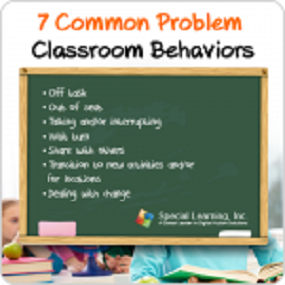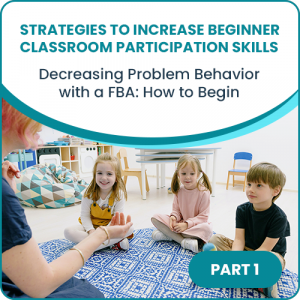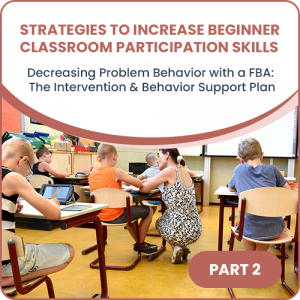Increasing Student Participation by Managing Problem Behaviors
What’s a critical element to increasing student participation? Managing problem behavior!
Problem behaviors can be highly disruptive to the classroom, community, and home environments. These behaviors also hinder the student’s ability to properly learn new skills. Some examples of problem behaviors are: getting out of their seat, going off task, talking or interrupting, not taking turns, not sharing with others, non-compliance, aggression, self-injury, tantrums, and self-stimulatory behaviors.
ABA Methods to decrease problem behaviors include:
Extinction
Extinction is a procedure used to extinguish an undesirable behavior. As an undesirable behavior is most likely being maintained by reinforcement, to extinguish a problem behavior, you must stop the student’s ability to access the reinforcer that follows the behavior.
Punishment
Punishment is a procedure that is used to reduce challenging behaviors. In ABA, punishment does not refer to punitive measures, rather it refers to the process of adding to or removing something in order to decrease a problem behavior from occurring in the future. Punishment is normally used to reduce harmful or aggressive behaviors.
Positive Punishment involves “adding” something in order to decrease the likelihood of an undesired behavior occurring in the future
Negative Punishment involves “removing” something in order to decrease the likelihood of an undesired behavior occurring in the future
Quick Tip
The most critical key to extinction is CONSISTENCY.
Copyright © by Special Learning Inc. All right reserved.
No part of this article may be reproduced without written permission. For information, email contact@special-learning.com.








